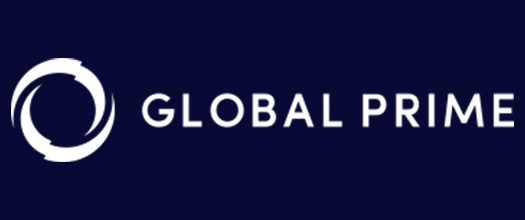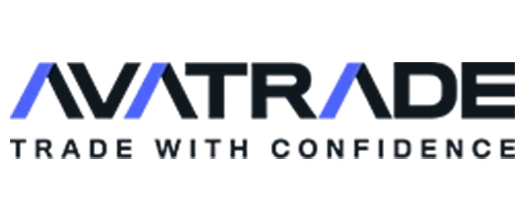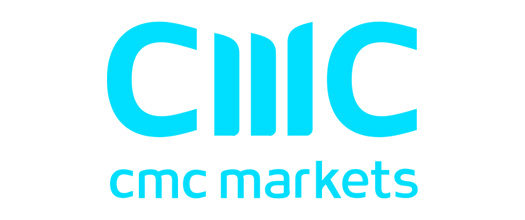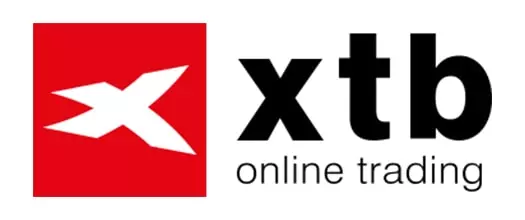- Jump to:
- Main features of the best Canada Forex brokers
- Forex Brokers in Canada Compared by Spread
- Account Types and Commissions
- Forex Legislation
- Financial Regulators
- Payment Methods
- Trading Software
- Mobile Trading
- FAQ
Our team of expert traders tested many regulated and trustworthy forex brokers that accept traders from Canada and compiled a toplist with the best among them. Each broker operating in Canada received a quality score based on several factors, including Trustpilot rating, regulation, fees and commissions, available trading platforms, customer service and more.
 Fusion Markets74-89% of retail CFD accounts lose money
Fusion Markets74-89% of retail CFD accounts lose money AxiThe vast majority of retail client accounts lose money
AxiThe vast majority of retail client accounts lose money FP Markets73.85% of retail investor accounts lose money
FP Markets73.85% of retail investor accounts lose money Global Prime74-89% of retail CFD accounts lose money
Global Prime74-89% of retail CFD accounts lose money AvaTrade76% of retail investor accounts lose money
AvaTrade76% of retail investor accounts lose money FBS72.12% of retail investor accounts lose money
FBS72.12% of retail investor accounts lose money
Below you can find a comprehensive comparison table of forex brokers for traders in Canada. We rank them based on several factors including: regulation, spreads and commissions, Trustpilot rating, trading instruments, trading platforms, deposit and withdrawal methods.
Main features of the best Canada Forex brokers
- Min Deposit$0Trading InstrumentsForex, Commodities, Indices, Crypto, US StocksRegulatorsASIC, FSA (Seychelles), VFSC (Vanuatu)Trading PlatformsMetaTrader4, MetaTrader5, cTrader, DupliTrade, Fusion+ Copy Trade, TradingViewSpread0.9 pips Classic; 0.0 pips ZeroLeverage1:30 (1:500 for forex and metals via VFSC)Deposit MethodsVisa, Mastercard, PayPal, Skrill, Neteller, Fasapay, Jeton Wallet, Perfect Money, Online Naira, Doku, Bitcoin, Ethereum, Litecoin, USDT, Tether, Ripple, bank wire, ZotaPay, VNPay, DuitNow, XPay, DragonPay, VAPay, FasaPay, AstroPay, PayID, Jetonbank, Sticpay, Interac, LuqaPay, Zotapay, MiFinityWithdrawal MethodsVisa, Mastercard, Bank Wire, Skrill, Neteller,Bitcoin, Ethereum, Litecoin, Tether, Ripple, MiFinity, Interac, PayPal, AstroPay, Jetonbank, DragonPay74-89% of retail CFD accounts lose money
Broker accepting traders from different regions, including Canada. Traders from Canada can resort to different payment methods, including options supporting CAD. The brand operates under licenses issued from ASIC, VFSC, and FSA. Tradable markets include Forex, Metals, Indices, Commodities, Cryptocurrencies, and US Stocks. These instruments can be traded via innovative platforms like MT4, MT5, cTrader, TradingView, and DupliTrade. Canadian traders can opt for the Standard account option and pay no commissions for their trades. Meanwhile, the spread on a currency pair like USD/CAD will have an average spread of 1.8 pips. Meanwhile, the Zero account will reduce the average spread on the pair to 0.9 pips and will charge a small round-trip commission of $4.50 per lot traded.
- Min Deposit$50 (AU$100)Trading InstrumentsForex CFDs, Shares CFDs, Metals CFDs, Commodities CFDs, Indices CFDs, Crypto CFDs, ETF CFDsRegulatorsASIC, CySEC, FSA (Seychelles), FSCA, FSA (St. Vincent and the Grenadines)Trading PlatformsMetaTrader4, MetaTrader5, WebTrader, IRESS, cTrader, TradingViewSpread1.0 pips Standard; 0.0 pips RawLeverage1:30Deposit MethodsVisa, Mastercard, Neteller, Bank Transfer, Skill, Sticpay, Fasapay, Virtual Pay, Perfect Money, Pagsmile, Dragonpay, Crypto, Apple Pay, Google Pay, Online Banking, Broker to Broker, PayPal, XPay, RapydWithdrawal MethodsVisa, Mastercard, Bank Wire, Neteller, Skrill, Paytrust88, PayPal73.85% of retail investor accounts lose money
Traders from Canada can open a trading account with FP Markets and choose from a range of account types. The broker is authorized to offer access to tradable markets thanks to licenses issued from ASIC, FSA (Seychelles), and FSCA. The broker supports popular trading platforms like MT4, MT5, cTrader, TradingView, and WebTrader. CFD trading will provide exposure to markets like Forex, Shares, Metals, Cryptocurrencies, and more. Forex trades of the pair USD/CAD traders will offer a minimum spread of 0.0 pips and an average spread of 0.3 pips for the Raw Account option. These tight spreads will be combined with a very small commission of $3 per side. Meanwhile, the Standard Account will remove any commission from your USD/CAD trades but will adjust the spread slightly higher at an average of 1.4 pips.
- Min Deposit$100 ($1 for Invest MT5 Account)Trading InstrumentsCFDs on Forex, Indices, Stocks, Commodities, Bonds, ETFs, CryptocurrenciesRegulatorsCySEC (No. 201/13), ASIC (No. 410681), FCA (No. 595450), JSC (No. 57026), FSCA (No. FSP51311), EFSA (No. 4.1-1/46), CMA (No. 178), CIRO, FSA (No.SD073)Trading PlatformsMT4, MT5, WebTrader, MT Supreme Edition, StereoTraderSpreadFrom 0.0 pips (Invest and Zero Accounts), 0.5 pips (Trade Accounts)Leverage1:30Deposit MethodsVisa, Mastercard, Skrill, Klarna, Bank Transfer, PayPal, Neteller, iDeal, POLi, Perfect Money, CryptocurrenciesWithdrawal MethodsBank transfer, Visa, Mastercard, PayPal, Neteller, Skrill, Perfect Money73% of retail investor accounts lose money
Global broker operating under the regulations of CySEC, ASIC, FCA, JSC, and FSCA. Canadian traders from British Columbia and Ontario can join the entity regulated by CIRO. Traders have access to platforms like MT4 and WebTrader. Tradable markets include Forex, Commodities, Indices, and Stocks. Forex traders can trade the major currency pair USD/CAD with a minimum spread of 0.1 pips and an average spread of about 1.6 pips. Since all trading fees will be built into the spread, Canadian forex traders will not pay any commission on their trades.
- Min Deposit$0Trading InstrumentsForex, Cryptocurrencies, Indices, Commodities, BondsRegulatorsASIC (No. 385620), VFSC (No. 40256)Trading PlatformsMT4 Desktop, MT4 Webtrader, MT4 AndroidSpread0.9 pips Standard, 0.0 pips RawLeverage1:500 (1:30 for ASIC entity)Deposit MethodsVisa, Mastercard, PayPal, Skrill, Neteller, Gate8, Dragonpay, Fasapay, VNPay, Pagsmile, BPay, POLi, AstroPay, Bank Transfer, Interac, Perfect Money, PayID, Jeton, MiFinity, XPay, CryptoWithdrawal Methods
Mastercard, Visa, Local Bank Transfer, Bank Wire Transfer, Skrill, Neteller, AstroPay, PayPal, Dragonpay, Perfect Money, Jeton, Interac, Cryptocurrencies
74-89% of retail CFD accounts lose moneyLicensed by ASIC and VFSC, Global Prime caters to global traders, including Canadians. The broker even supports payment solutions exclusively available to Canadian traders, processing payments in CAD. Global Prime offers two different account types for forex trading – Standard and Raw. The Raw account offers a minimum spread of 0.0 pips on the major currency pair USD/CAD, while the average value ranges around 0.32 pips. The commission charged per lot traded per side is $3.50. The Standard account eliminates the commission charge for USD/CAD trades but a 0.9 mark-up will be added to the typical Raw spread value.
- Min Deposit$0Trading InstrumentsForex, Stocks, IPOs, Indices, Commodities, CryptocurrenciesRegulatorsASIC, FCA, CySEC, DFSA, FSA (Saint Vincent and the Grenadines)Trading PlatformsMT4 Desktop, MT4 WebTrader, Axi MobileSpreadFrom 0.0 pips (Elite and Pro Accounts), 0.9 pips (Standard Account)Leverage1:30Deposit MethodsVisa, Mastercard, Bank Transfer, Neteller, Skrill, AstroPay, Fasapay, Przelewy24, Boleto, Pix, Bitcoin, Ethereum, Ripple, Litecoin, Tether, Stellar, POLi, iDEAL, Sofort, GiropayWithdrawal MethodsMastercard, Visa, Bank Transfer, Przelewy24, Fasapay, Skrill, AstroPay, Pix, Boleto, Neteller, Bitcoin, Ripple, Ethereum, Litecoin, Tether, StellarThe vast majority of retail client accounts lose money
Trading services are authorized by top-tier regulators like ASIC, CySEC, and FCA. Canadian traders are also free to join the broker and set up their accounts in CAD. Through the MT4 platform and WebTrader for MT4, Axi offers its clients access to markets like Forex, Shares, Indices, Commodities, IPOs, and Cryptocurrencies. Based on their trading preferences, traders can open a Standard, Pro, or Elite account at Axi. The Standard option offers zero commissions and spreads starting at 0.9 pips. The Pro and Elite accounts will charge a small round-trip commission of $7 and $3.50 per trade, respectively but their spreads on major currency pairs like USD/CAD will start from 0.0 pips.
- Min Deposit$0Trading InstrumentsCFDs on Forex, Indices, Shares, Commodities, Treasuries, Cryptocurrencies, Share baskets Investments on ETFs, Shares, Managed funds, Options, and moreRegulatorsASIC, MAS, FCA, BaFin, IIROCTrading PlatformsCMC Markets’ Next Generation, MetaTrader 4SpreadFrom 0.0 pips (UK), 0.3 pips (SG, AU), 0.2 pips (IE)Leverage1:30Deposit MethodsVisa, Mastercard, Maestro, Online Banking, Bank TransferWithdrawal MethodsVisa, Mastercard, PayPal, Bank Transfer71% of retail investor accounts lose money
Operates in various markets, including Canada through a CIRO authorization. Tradable markets include Forex, Commodities, Indices, Shares, and Treasuries. Trading is possible through proprietary platforms as well as the well-known MT4 platform. Competitive prices are achieved through low spreads (min of 1.3 pips on USD/CAD) and zero commission charged on your CFD forex trades. There is, however, a small Guaranteed Stop-Loss Order (GSLO) charge of $0.0001 per unit.
- Min Deposit$0Trading InstrumentsRegulatorsCFTC, CIRO, FCA, CBI, Central Bank of Hungary, ASIC, SFC (Hong Kong), SEBI, JSDA, MASTrading PlatformsIBKR Desktop, IBKR Trader Workstation, IBKR Mobile, IBKR GlobalTraderSpreadFrom 0.1 pipLeverage1:20Deposit MethodsBank Wire, Check (USA only)Withdrawal MethodsBank Wire
A reputable broker option for Canadian traders, with a license issued from CIRO. The brand has included products like spot currencies, stocks, ETFs, options, bonds, and futures/FOPs in its list of offerings. Over 100 currency pairs can be traded with spreads as tight as 0.1 pips and commissions ranging between 0.08 to 0.20 bps times the trade size. Canadian traders will have access to the full range of proprietary IBKR platforms and their web, desktop, and mobile versions.
- Min Deposit$0 ($25 for Trustly, Visa, Mastercard)Trading InstrumentsRegulatorsFCA, CFTC, KNF, MAS, IIROC, MASASIC, FSA (Japan), FSC (British Virgin Islands)Trading PlatformsMT4, TradingView, Oanda WebSpreadFrom 0.6 pips (Standard Account), 0.1 pips (Commision Account)Leverage1:50Deposit MethodsVisa, MasterCard, Credit & Debit Cards, Bank Wire, Skrill, NetellerWithdrawal MethodsVisa, Bank Wire, Credit & Debit Cards, Skrill, Neteller72% of retail CFD accounts lose money
CIRO-licensed broker that welcomes Canadian traders. Tradable CFD instruments feature markets like Forex, Indices, Commodities, Metals, Bonds, and more. Retail traders can opt for the Regular account option and enjoy competitive prices, with dynamic spreads (about 1.8 pips on USD/CAD) and zero commission charged on trades. Traders who increase their trading volume may qualify for Elite status and improve the order execution speed and other trading conditions as they progress to higher Elite tiers.
- Min Deposit$100Trading InstrumentsForex CFDs, Commodity CFDs, Shares CFD's, Index CFDs, Crypto CFD'sRegulatorsSCB (No. SIA-F220), ASIC (No.391441), CySEC (No. 246/14), FCA (No. 921296)Trading PlatformsMT4, MT5, WebTrader, TradingView, Capitalise.ai, FlashTraderSpread0.1 pips on Standard and TradingView Accounts; 0.0 pips Raw AccountsLeverage1:30Deposit MethodsVisa, PayPal, Mastercard, Wire Transfer, Neteller, Skrill, Tether, Bitcoin, BPAY, Dragonpay, Fasapay, Interac, Pix, UnionPayWithdrawal MethodsMastercard, Visa, PayPal, Skrill, Neteller, Bitcoin, Tether, Wire Transfers, BPAY, Fasapay, Pix, Interac, UnionPay76.09% of retail investor accounts lose money
Canadian traders looking for a place to trade forex and different CFD products can join eightcap. Licensed by SCB (Bahamas), ASIC, FCA, and FSA (Seychelles), the broker offers smooth trading experience through platforms like MT4, MT5, TradingView, and WebTrader. Standard and Raw are the two main types of accounts available to Canadian traders. If the currency pair USD/CAD is among your preferred tradable choices, you can trade the ticker with a minimum spread of 1 pip on the Standard account and 0.0 pips on the Raw account. Commission is charged only on Raw trades, imposing a surcharge of $3.50 on each side of the trade.
- Min Deposit$250Trading InstrumentsForex, Stocks, Indices, Commodities, ETFs, Indices, CryptocurrenciesRegulatorsFCA (License No. FRN 522157), CySEC (License No.169/12), FSC (FSC License No.: 000302/438), IFSC (License No.: 000302/46.), KNF (N/A), CNMV (N/A), BaFin (registered), FSCA (N/A), FSA Norway (registration ID - FT00118162)Trading PlatformsxStation 5, xStation MobileSpreadFrom 0.1 pips (Pro Account), 0.5 pips (Standard Account)Leverage1:30Deposit MethodsVisa, Maestro, Mastercard, Bank Transfer, Neteller, Skrill, PayPal, Ecommpay, PayUWithdrawal MethodsBank Transfers, Visa, Mastercard, Skrill80% of retail investor accounts lose money
Broker licensed by multiple top-tier regulators, including CySEC, FCA, KNF, DFSA, and FSC (Belize). Canadian traders are also accepted, offering them the chance to trade over 70 forex CFDs. One can also trade different markets like Shares, Forex, Commodities, and more through the very own platform of XTB. Implementing a fair pricing model through a minimum spread on major pairs like USD/CAD of 1.5 pips. Since any trading surcharge is built into the spread, the broker charges no commission on your forex CFD trades.
Forex Brokers in Canada Compared by Spread
| Broker | EUR/USD | USD/JPY | GBP/USD | USD/CHF | AUD/USD | EUR/GBP | USD/CAD |
|---|---|---|---|---|---|---|---|
| 1. Fusion Markets | 0.07 | 0.13 | 1.01 | 0.37 | 0.90 | 0.23 | 0.14 |
| 2. Admirals | 0.1 | 10 | 1.00 | 1.2 | 0.4 | 0.00003 | 1.1 |
| 3. Interactive Brokers | 0.1 | 0.5 | 0.4 | 0.5 | 0.3 | 0.3 | 0.4 |
| 4. Global Prime | 0.13 | 0.28 | 1.11 | 0.34 | 0.07 | 0.28 | 0.26 |
| 5. CMC Markets | 0.5 | 0.7 | 0.9 | 1.2 | 0.6 | 1.1 | 1.3 |
| 6. XTB | 0.9 | 14 | 2.2 | 1.2 | 1.1 | 1.3 | 1.5 |
| 7. Eightcap | 1.00 (min) | 1.1 | 1 | 1.4 | 1.2 | 1 | 1.2 |
| 8. FP Markets | 1.1 | 0.30 | 1.2 | 1.8 | 1.2 | 0.20 | 1.5 |
| 9. Axi | 1.2 | 1.4 | 1.2 | 1.5 | 1.3 | 1.1 | 1.4 |
| 10. Oanda | 1.6 | 1.8 | 2.1 | 1.6 | 1.2 | 1.3 | 1.9 |
Account Types and Commissions
| Broker | Min Deposit | Account Types | Commission per Lot | Trustpilot Rating |
|---|---|---|---|---|
| 1. Fusion Markets | $0 | Zero, Classic, Islamic, Demo, Professional | $0 Classic Account, $4.50 round turn on Zero Account | 4.9 |
| 2. Axi | $0 | Standard, Elite, Professional, Demo, Islamic | $0 on Standard Account; $7 round trip on Pro Account | 4.8 |
| 3. FP Markets | $50 (AU$100) | Standard, Raw, Demo, Professional, Islamic | $0 Standard Account; $6 round turn on Pro Account | 4.7 |
| 4. Global Prime | $0 | Standard, Raw, Demo, Professional, Islamic | $0 Standard Accounts; $7 round turn on Raw Accounts | 4.5 |
| 5. CMC Markets | $0 | Standard Account, FX Active Account | $2.50 per lot (per side) | 4.2 |
| 6. Eightcap | $100 | Standard, Raw, TradingView Account | $0 on Standard and TradingView Accounts; $7 round turn on Raw Accounts | 4.2 |
| 7. Oanda | $0 ($25 for Trustly, Visa, Mastercard) | Standard account | $3.50 on Zero Accounts | 4.1 |
| 8. Admirals | $100 ($1 for Invest MT5 Account) | Trade (Standard), Invest (MT5), Zero | $3 per lot | 3.9 |
| 9. XTB | $250 | Standard, Pro, and Islamic Accounts | $0 | 3.7 |
| 10. Interactive Brokers | $0 | IBKR Lite, IBKR Pro | From 0.08 to 0.20 bps x trade size | 3.1 |
Canada, the home of ice hockey and maple syrup, is a North American country with a population of 37.6 million and a gross domestic product of $354.3 million for the third quarter of 2019 alone. The country comprises ten provinces along with three territories. It boasts a stable and mature foreign exchange market.
Forex trading is well-regulated in the Great White North although some brokerages consider the regulatory framework in the country unfavorable. This is the primary reason why there is a small number of domestic brokers in Canada.
There is no universal foreign exchange trading legislation across the country. The exact regulations vary between Canada’s different provinces and territories. The Forex market is additionally overseen on a federal level, which creates a challenge from the perspective of brokerages.
There are as many as fifteen different regulatory authorities in the country, two federal ones along with thirteen provincial ones. Before they venture into the foreign exchange markets, Canadian traders must gain a proper understanding of the Forex regulations applicable in the province/territory they are based in.
Canada Forex Legislation
All brokerages operating on Canadian soil must be licensed and overseen by the Investment Industry Regulatory Organization of Canada (IIROC). The Forex markets are regulated either as derivatives or as securities. Canada-friendly brokerages must have a physical presence in the country to offer their services to locals.
Licensed brokerages are permitted to sell contracts for difference (CFDs) to Canadian customers but they are expected to prominently display the risks associated with this financial instrument on their websites.
The brokers must also carefully evaluate the levels of knowledge and experience of each customer to determine whether they are competent enough to trade with volatile CFDs. Additionally, the companies must establish cumulative loss limits for all customers’ accounts.
Canadian regulators have also set rules regarding the maximum leverage Canada-friendly brokerages can offer to customers from the country. The ceiling on leverage for retail clients ranges between 45:1 and 50:1.
The exact ratio differs depending on what currency pairs one trades with. Hedging is not an option for Canadian customers. This practice is considered illegal here. With that in mind, leverage is higher for major currencies and lower for minor and exotic pairs due to their increased volatility.
An extra level of protection is added through an insurance policy called the Canadian Investor Protection Fund (CIPF). At the moment of writing, there are more than 170 brokerages to offer this type of insurance to Canadian customers, with maximum coverage of CA$1 million if a broker declares insolvency.
The CIPF is a non-profit program launched by the regulators across all provinces and territories of the country. It should be mentioned that this policy protects you only in case your broker files for bankruptcy.
This compensation is not applicable if clients lose their funds through trading or because of fraud. To ensure your chosen broker is a member of the scheme, you can directly call the CIPF or talk to your investment advisor.
Speaking of fraud, scams are uncommon at reliable Canada-friendly trading websites because brokerages that violate the regulatory framework risk heavy penalization and license revocation. While this may not sound like a great comfort for the affected parties, such penalizations aim at preventing brokerages from cheating their customers in the first place.
Lastly, each prospective customer is expected to meet the minimum-income, net worth, and assets thresholds as stipulated by their provincial regulatory body. This makes it difficult for some clients to enter the Forex markets because they do not have sufficient capital.
Canada Financial Regulators
As previously mentioned, there are a total of fifteen regulatory bodies to oversee Forex trading activities in Canada. The main regulatory authority for the foreign exchange markets in the country is the Investment Industry Organization of Canada (IIROC).
This non-profit organization came to be after the Investment Dealers Association (IDA) and the Market Regulation Services Inc. merged in June 2008. It controls the brokers and all trading activities on the equity and derivatives markets across the country.
As the main watchdog, the IIROC has the right to fine brokers or suspend their licenses if they violate its regulatory framework. The regulator conducts adequate oversight to ensure all Canada-friendly brokerages operate in full compliance with its framework and high standards.
The sector is also overseen by the umbrella regulator the Canadian Securities Administrators (CSA). The latter is tasked with improving, harmonizing, and coordinating the country’s financial market. The organization consists of the regulatory bodies in Canada’s ten provinces and the three territories.
Other than that, each province has its own regulator. For example, the Forex market in the province of Quebec is overseen by the local Autorite des Marches Financiers (AMF). In British Colombia, Forex trading contracts are regulated as securities and fall under the jurisdiction of the British Colombia Security Commission. The Financial Services Commission and the Ontario Securities Commission oversee the market in Ontario.
Canada Forex Payment Methods
Canada-friendly brokerages provide their customers with various trading instruments including foreign exchange trading, indices, stocks, commodities, cryptocurrencies, and exchange-traded funds (ETFs).
However, before you can start trading for real money, you will have to fund your live account. Each brokerage has its own recommendations as to the minimum starting capital customers need to begin their trading experience.
The good news is Canadian brokers give their clients a choice from many different methods of payment. Debit and credit cards by Maestro, Visa, and Mastercard are broadly available across all reputable Canada-friendly providers of Forex trading.
This is the preferred method of many traders from the Great White North due to its convenience and time-efficiency. The limits for card deposits differ between brokerages, but the minimum usually ranges between CA$50 and CA$100.
Another option for traders from Canada is to initiate wire transfers, either in person or via their bank’s online banking system. Wire transfers are significantly slower than card payments as they take between two and five business days. On the plus side, there are usually no restrictions on the maximum you can transfer to your live account’s balance.
Checks are also readily accepted by Canada brokers. However, they rank among the slowest payment methods because they require between five and ten business days. Usually, the requirement is for the check to be written either in USD or CAD.
Many websites support electronic funds transfers, commonly known as EFTs. This method enables you to move funds directly from your online banking balance to the bank account of the brokerage. Needless to say, the bank account should be in your name for you to initiate an EFT transaction.
Digital wallets like Skrill and Neteller are also commonly accepted. Canada customers can register their live accounts in CAD as the base currency to avoid conversion charges. In many cases, there are no additional fees on payments on the brokerages’ side, but you may be charged for inactivity if your account remains dormant for a long period.
Popular Trading Software in Canada
Available trading software and tools can differ significantly between Canada-friendly brokerages, although many prefer to use the independently developed platforms of MetaQuotes Software. The latter has designed two trading platforms, each one serving a different purpose.
The first option is the MetaTrader 4 (MT4) software which has acquired the status of a gold standard among traders worldwide. It is available for retail trading through specific Canada-friendly brokers.
The platform is optimized for trading on the Forex markets. Among its most distinctive traits are its easy deployment and intuitive design. MetaTrader 4 is ideal for beginner traders. They can benefit from great functionalities such as copy trading and auto-trading with the help of the Expert Advisors.
The software also appeals to well-versed traders who can take advantage of its advanced charting capabilities and tools for technical analysis. Available in dozens of languages, MetaTrader 4 can be installed on a variety of desktop and mobile devices. It centers around the Forex markets.
Canadians who prefer to trade stocks and commodities are recommended to try MT4’s successor, MetaTrader 5. It supports more timeframes compared to its predecessor and has tons of charting options, in-built technical indicators, analytical and graphical objects.
The newer platform was designed in the MQL5 programming language. This enables traders knowledgeable in coding to create custom-made technical indicators. MetaTrader 5 is considered a better option for Canadians who trade with multiple brokers. It allows them to move between multiple accounts with great speed, ease, and efficiency.
Both platforms are available for free download. However, Canadian traders, who do not feel like installing additional software on their devices, can execute their trades straight in their browsers thanks to the broad availability of the MetaQuotes WebTrader.
The web-based version gives you instant access to the markets via most browsers and operating systems. It upholds the highest security standards as all data transmitted between you and your brokerage is heavily encrypted.
The browser version also allows you to execute trades with a single click. Similarly to the downloadable platforms, WebTrader is equipped with multiple timeframes (ranging from a minute to a month), detailed trading history, technical indicators, and graphical objects.
Mobile Trading in Canada
Data compiled by Statista shows that Canadians are avid smartphone users, with the number of people who own mobile phones exceeding 25 million in 2018. Most brokerages to accept traders from the Great White North cater to popular demand and ensure access to their products on the go, giving Canadian customers complete control over their trading activities.
There are separate native apps for Android and iOS, which usually can be downloaded either straight from the brokerages’ websites or the two major mobile software platforms, Google Play and the App Store. Users can keep a close eye on their positions and take advantage of any unexpected price movements in the markets.
They can create watchlists and easily handle their orders on the go. The apps give you all the functionalities associated with the desktop experience combined with greater convenience and flexibility.
Canada-friendly brokerages that use the MetaQuotes platform can usually be accessed on the go via the MT4 or the MT5 mobile apps. The latter offer equally smooth experience as their desktop counterparts and mirror them feature-wise.
Mobile users will benefit from limit and stop orders, advanced chart monitoring, access to their full trading histories, analytical objects, a variety of timeframes, and dozens of technical indicators.











